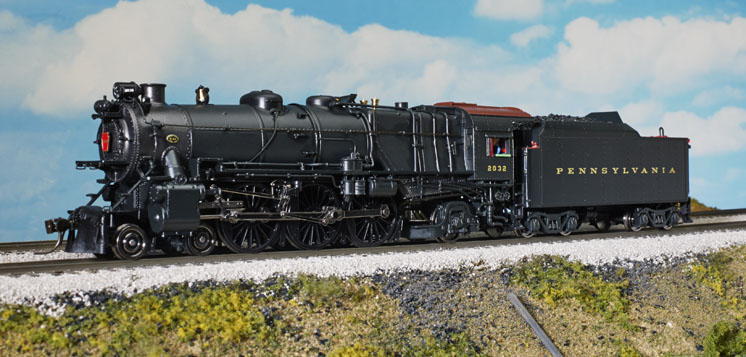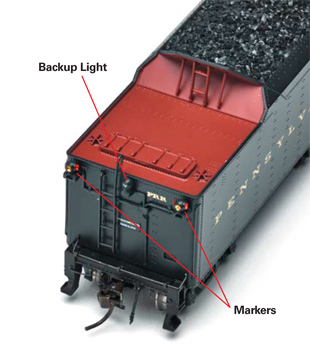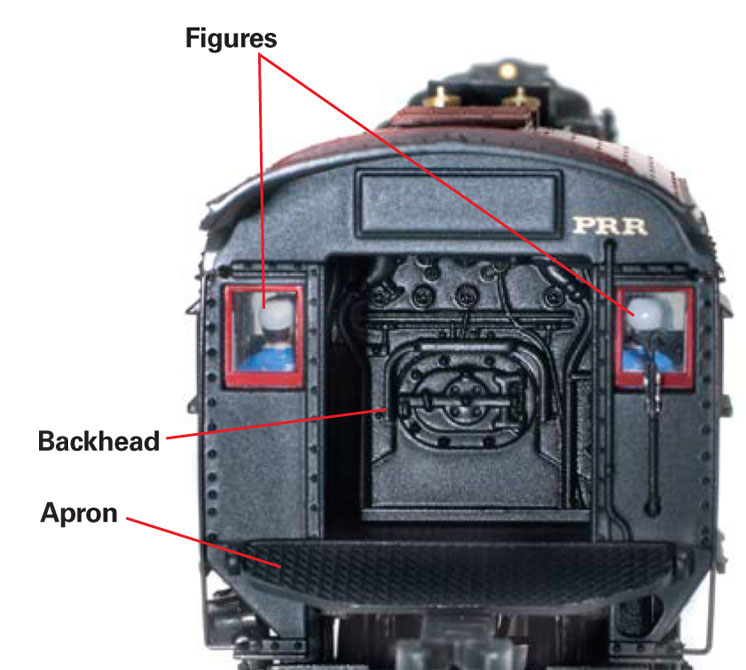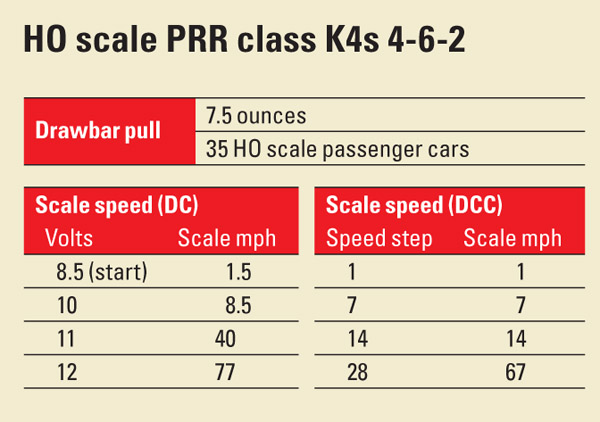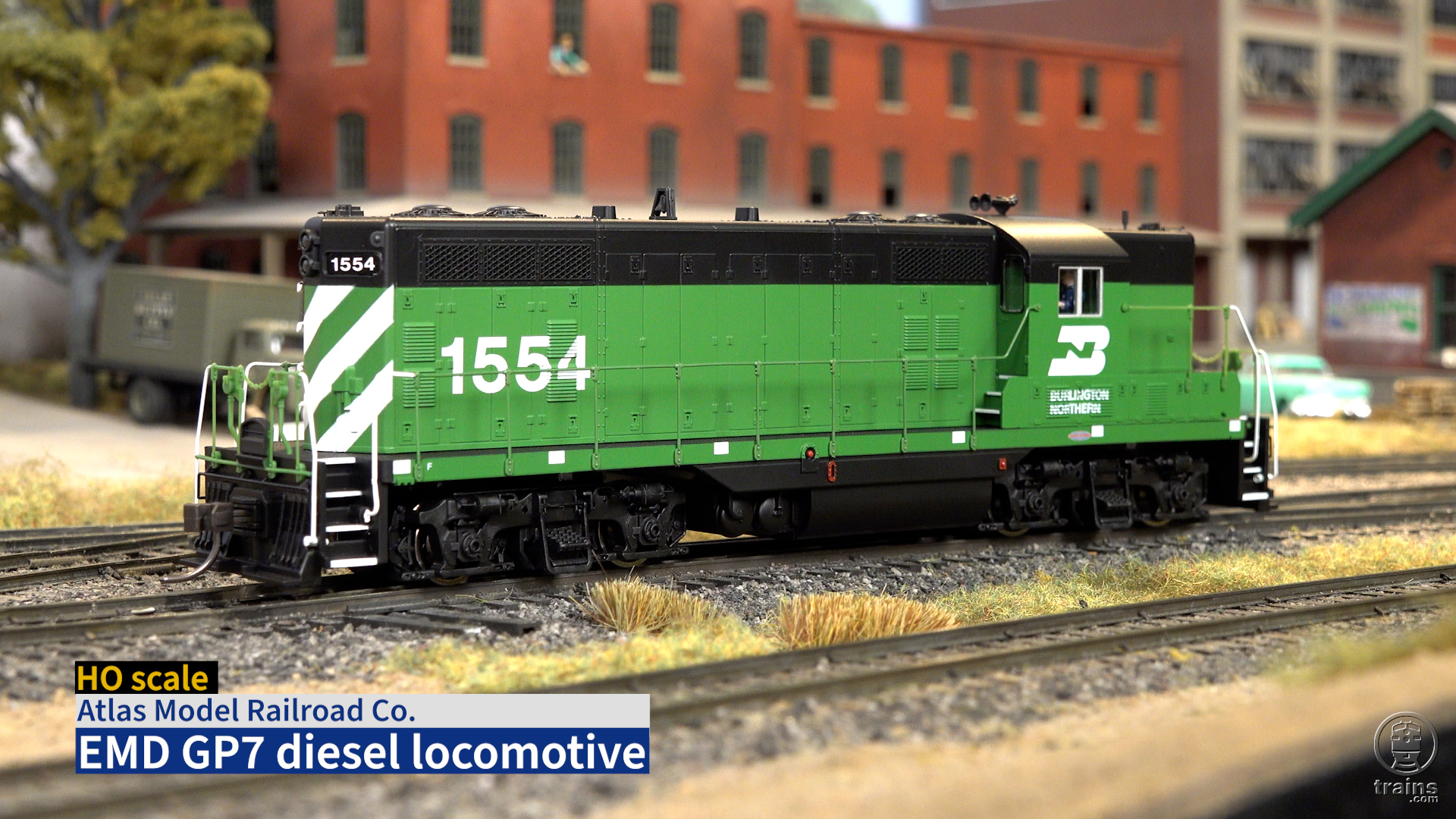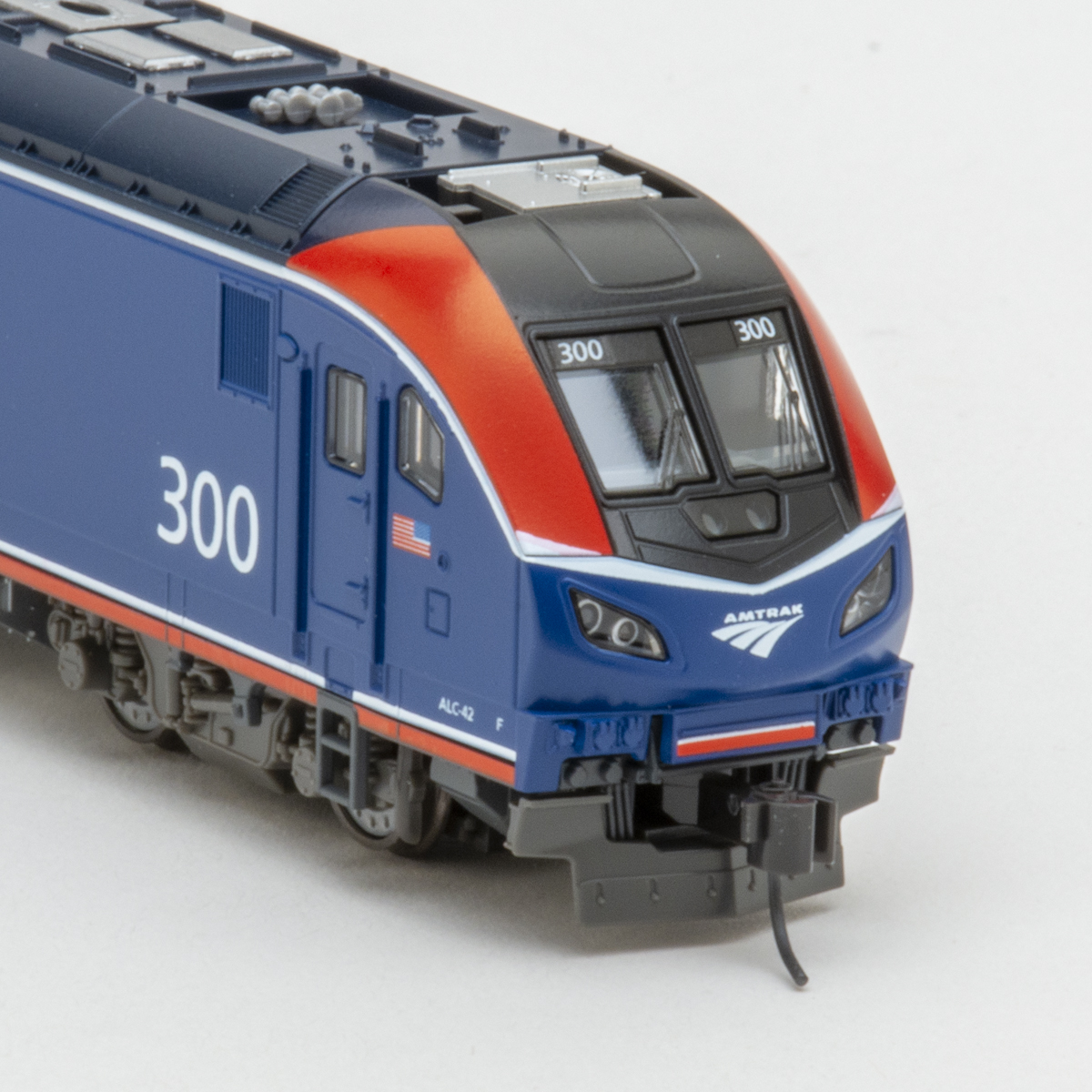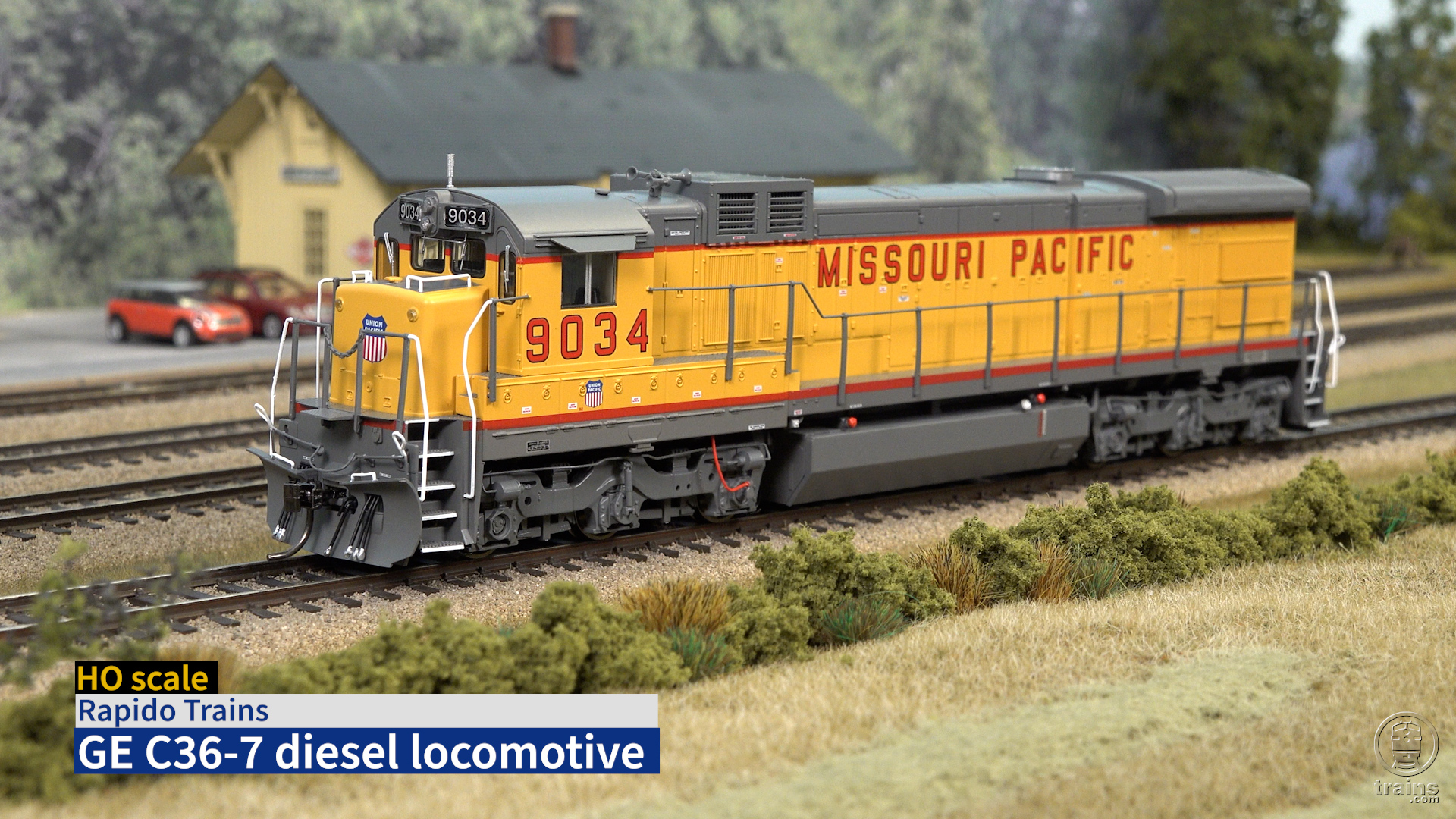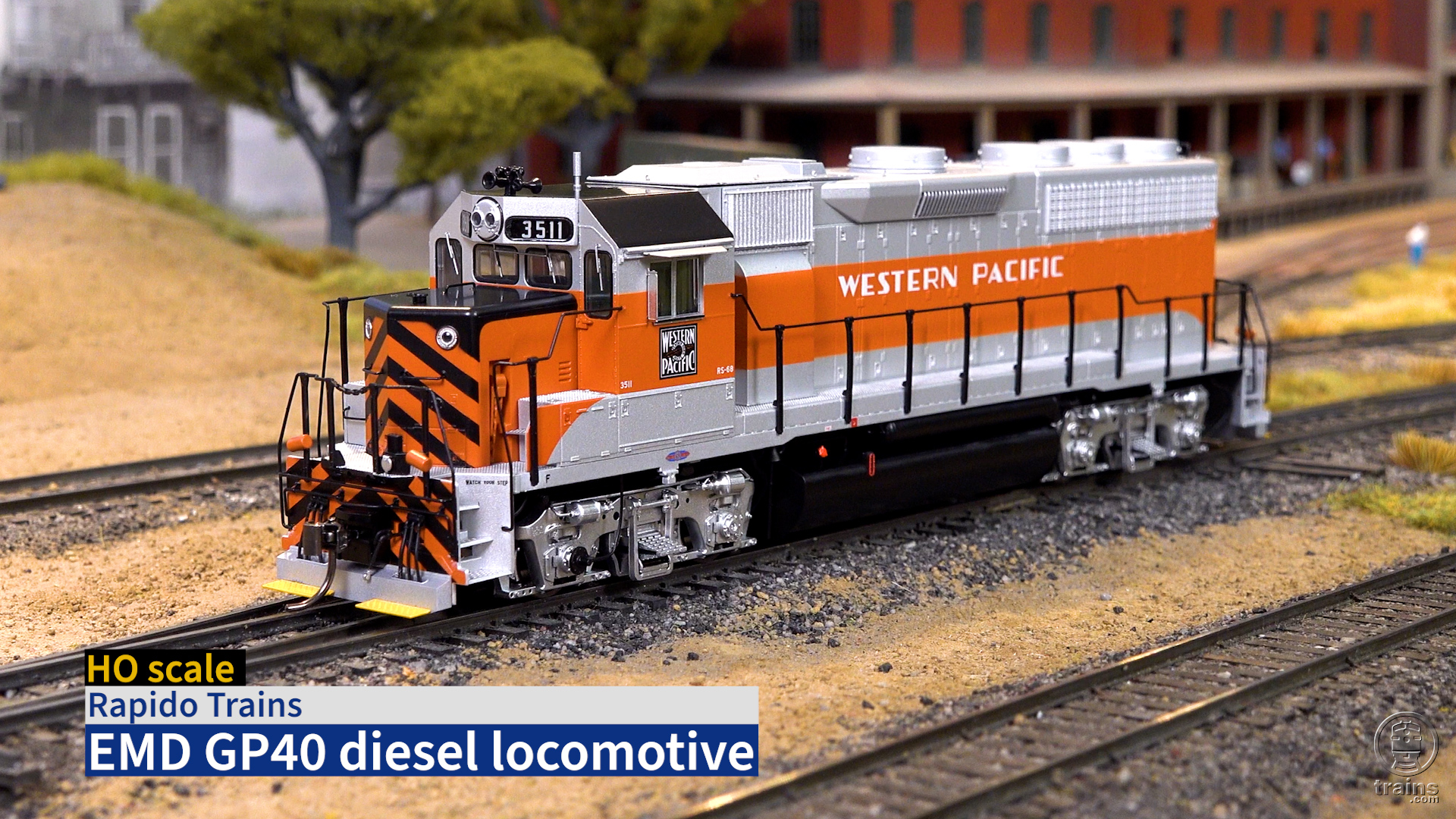The prototype. For more than 40 years, the Pennsylvania RR K4s served as the backbone of Pennsy passenger service, hauling trains throughout the vast system. The railroad’s chief of motive power, J.T. Wallis, oversaw the design of the heavy 4-6-2 steam locomotive. (The “s” in the K4s designation stood for superheater equipped.) Of the 425 K4s locomotives built between 1914 and 1928, 350 were built by the PRR’s Juniata Shops, while nos. 5400 to 5474 were built by the Baldwin Locomotive Works.
Throughout their long careers, some K4s locomotives served as test-beds for disc drivers, streamlining, poppet valves, and other experiments. The Pacific-type locomotives served until the very end of the Pennsy steam era in 1957.
The Many Faces of the Pennsy K-4: Classic Power 6 by Bert Pennypacker and Alvin F. Staufer (N.J. International) provides an extensive history and scale drawings of this famous steamer.
The die-cast metal locomotive and tender features sharp molded detail, such as rivet seams and boiler bands that match prototype photos. The many separate details include the bell, whistle, safety valves, and all piping.
The model is smoothly painted in Pennsy’s “almost black” Dark Locomotive Green Enamel. The lettering looks correct for the era. The Juniata builder’s plates are legible under magnification.
The shiny metal pilot and tender wheels would look more realistic if they were painted. All the wheels are the correct diameter, including the scale 50″ diameter trailing truck wheels.
The mechanism. As in the 2005 release, the model’s can motor is inside the locomotive firebox. A gearbox connects the motor to the second driver axle, while the metal siderods transfer power to the other two driver axles.
The model’s die-cast metal construction and traction tires on the rear set of drivers provide a substantial 7.5 ounce drawbar pull. The locomotive had no problem hauling an 18-car passenger train around our layout. Most impressively, the K4s single-handedly hauled a 12-car passenger train up a 3 percent grade without slipping or stalling.
The Paragon2 decoder and two downward-facing speakers are housed inside the tender. A wiring harness runs from the locomotive to a socket on the front of the tender.
New smoke and upgraded sound. One new addition to the BLI K4s is an operating smoke generator. After putting several drops of smoke fluid in the stack, I ran the model on both direct-current (DC) and Digital Command Control (DCC) layouts. The plume of smoke lasted several minutes. I especially liked the puffing action of the smoke that’s synchronized with the motion of the drivers and exhaust chuff sounds. Although the output of the smoke can be adjusted by programming configuration variables (CVs) 236 and 237, I found the out-of-the-box setting to be adequate. I also appreciated that the smoke can be shut off with DCC function 7.
The Paragon2 sound system is the biggest improvement over the original release. The decoder works reliably on both DC and DCC layouts, and even includes some programming capabilities for DC modelers.
As with its earlier release the K4s includes a light-emitting diode locomotive headlight and tender backup light that operate according to direction in DC and DCC. The class lights and marker lights are non-operational.
The Paragon2 decoder includes several configuration variables (CVs) that allow DC users to fine tune the locomotive’s performance using the BLI DC Master Analog Control module (suggested retail price $39.99, see www.broadway-limited.com for more information). Installing this device between the DC power pack and the track allows users to program CVs as well as trigger various functions, including sound effects.
Using the DC Master, I programmed the analog starting voltage (CV252) low enough that the locomotive started moving at 5 volts. However, at that voltage the sounds wouldn’t start up. I set sound system startup voltage to its lowest setting (a value of 1) and then set CV252 to a value of 70. With those settings the model’s sounds started up at 6.5 volts, and the model started moving at 7 volts.
DCC operation. The Paragon2 decoder features 28 user-triggered functions. The whistle has the deep tone of a prototype Pennsy passenger whistle. There’s even a function to automatically trigger the long-long-short-long grade-crossing sequence. I enjoyed functions 5 and 6, which allow the user to increase or decrease the chuff intensity. This is useful to simulate a locomotive working hard as it starts out with a heavy load, or conversely an engine drifting downhill or running light. Other effects, such as crew radio dialog, seemed out of place. The decoder supports function mapping, so those who don’t have 28-function cabs can still access most of the effects.
Like other Paragon2 equipped locomotives, the K4s has a “macro” feature. A modeler can program an operating
sequence and automatically play it back. This allows the model to essentially run on auto-pilot, making station stops or following some other sequence, while an operator actively works another engine.
I programmed the decoder on the main as well as on a programming track. However, the decoder couldn’t read back CVs with our NCE or MRC DCC systems, even when our programming track was wired with a SoundTraxx PTB-100 programming track booster. The decoder did read back CVs when I used a Digitrax Zephyr DCC system with the PTB-100 booster.
Smoke, sounds, and stellar pulling power make the BLI K4s even better the second time around.
Manufacturer
Broadway Limited Imports, LLC
9 East Tower Circle
Ormond Beach, FL 32174
www.broadway-limited.com
Road numbers and eras: 2032, 920, 1139, 5351, 5366, 5435 (1947 to 1957).
1533, 5041, 5343, 5346, 5356, 5393 (1930s to 1947 version). Unlettered/unnumbered models of both versions available.
Features
- Die-cast metal locomotive and tender construction
- Electrical pickup on four drivers and all tender wheels
- Five-pole skew-wound motor with dual brass flywheels
- Light-emitting diode headlight and backup light
- Metal operating couplers on locomotive pilot and rear of tender
- Minimum radius: 18″
- Operating smoke unit
- Optional non-operating scale-size front coupler
- Paragon2 dual-mode DCC sound decoder with dual speakers
- RP-25 contour metal wheels in gauge
- Weight: 1 pound 7.2 ounces (locomotive and tender), 15.9 ounces (locomotive only)





